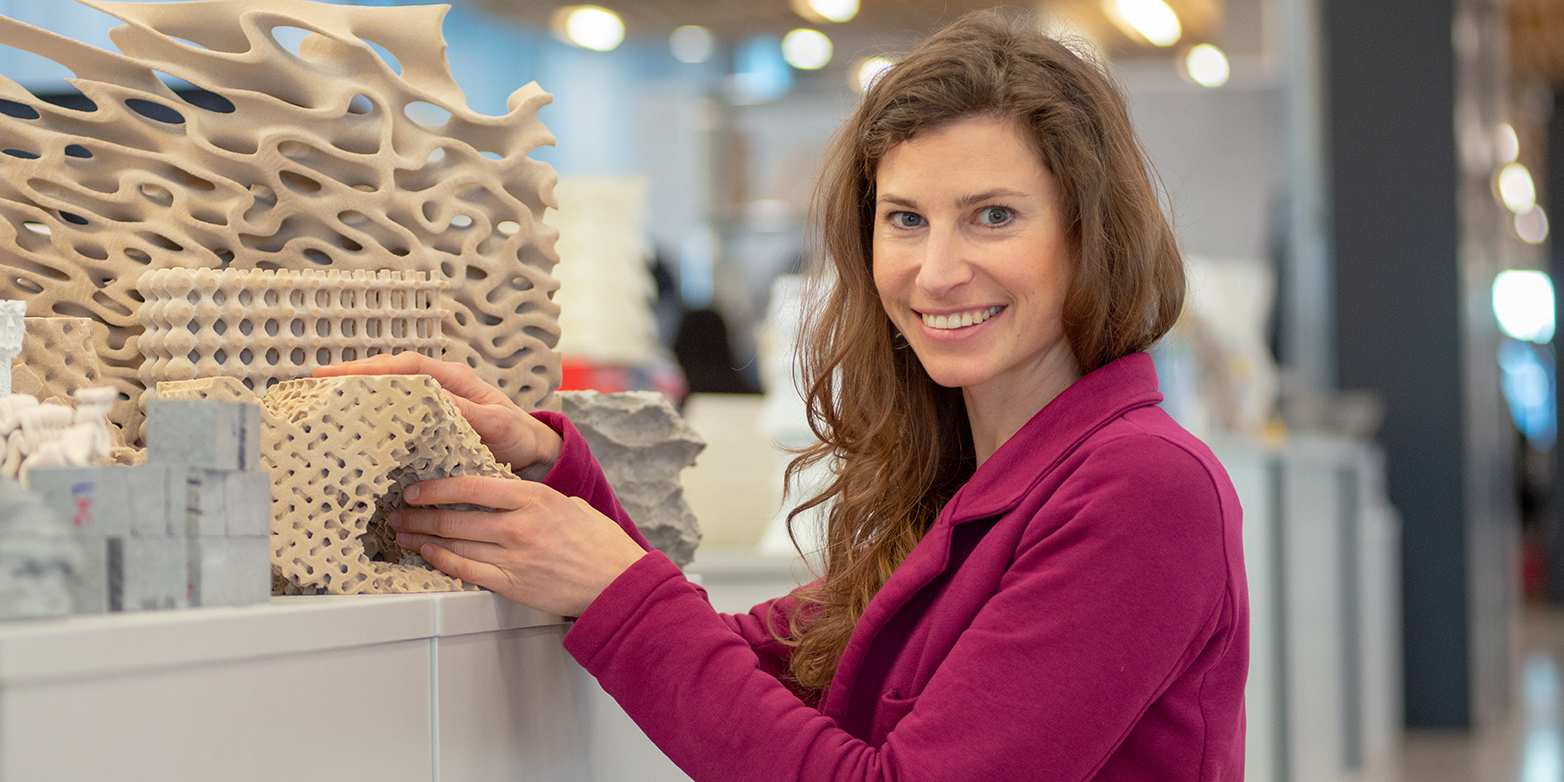Marine biologist on a mission
Coral reefs are suffering because of climate change. Ulrike Pfreundt aims to use ecologically sound 3D printed structures to create artificial reefs that provide new habitats for more resistant corals.

Ulrike Pfreundt likes to think big and knows what she wants. “If the world’s oceans continue to warm up at this pace, more than 90 percent of all coral reefs are in danger of dying by 2050 – and I want to do something about that,” says the 34-year-old German researcher.
She is visibly distressed by the fact that these colourful ecosystems are becoming increasingly pale. Corals owe their magnificent colours to symbiotic algae that live in their tissue and supply them with food. If the water gets too warm, the corals repel the algae, fade and eventually starve.
“Since reefs are breeding grounds for at least a quarter of all fish species in the ocean, their loss has a devastating effect on the stability of marine ecosystems,” Pfreundt explains. This not only poses a threat to global fishing; millions of people worldwide depend directly on intact reefs to provide them with food, income and protection from flooding and coastal erosion. This is why Pfreundt has set herself the task of repopulating dead coral reefs.
Restoring the oceans’ rainforests
Pfreundt studied molecular biology and genetics at Freiburg im Breisgau. “I wanted to understand life at its deepest level,” she recalls. Even as a child, she was fascinated by the diversity of rainforests. At the age of 20, she discovered her passion for the life under the sea. Since then, she has been a regular diver and is actively involved in supporting marine nature reserves. She studied marine biology as her secondary subject and later combined genetics and marine biology in her doctoral thesis.
Due to her passion for interdisciplinary research, Pfreundt joined the Institute of Environmental Engineering at ETH Zurich in 2016 with an ETH Postdoctoral Fellowship. Professor Roman Stocker’s team provided her with an ideal environment: biologists, physicists, engineers and mathematicians work together to investigate how microorganisms shape the ecology of the oceans.
Recruiting resistant corals
This also includes the complex ecosystems of corals. “Many species reproduce by releasing sperm and eggs into the water, from which floating larvae develop,” explains Pfreundt. But they have to find a suitable substrate on which they can settle and grow into young corals. “Dead coral reefs are difficult for the larvae to access,” she continues. The reason is that dying reefs decay and become overgrown by macroalgae. However, the larvae need a certain degree of structural diversity and a hard substrate free of algae to settle.
Therefore, Pfreundt wants to restore degraded reefs using artificial structures. She is convinced that strategically planned artificial reefs can protect coastlines while developing into self-supporting habitats over time.
But how can artificial reefs help if the water is simply too warm? “First, not all corals will die immediately,” says Pfreundt. Her assumption is that certain areas will remain suitable for coral reefs – for example, if there is a cooling current nearby. “And second, luckily I’m not alone,” she laughs. In fact, scientists around the world are working hard to cultivate heat-resistant coral symbioses or track them down in the reefs.
Tackling structural complexity
Previous attempts to recruit baby corals with artificial reefs have frequently failed, due to the fact that most artificial reefs are not structurally sophisticated enough: they do not provide sufficient shelter for young corals and interact too little with the current to bring the larvae close enough to the substrate.
This is exactly where Pfreundt’s project comes in. “We know that shape and surface texture play a fundamental role, but we don’t know in detail which aspects are crucial,” says the young researcher. For this reason, she works with Benjamin Dillenburger and Mathias Bernhard from the Digital Building Technologies group at the Department of Architecture. The plan is to use 3D printing to develop geometrically suitable structures for ecologically sound, scalable reef modules.
The first step is to develop surfaces with varying structural features such as grooves, holes, overhangs and edges in the millimetre to centimetre range. Pfreundt wants to test their interaction with water flow and the coral larvae transported in it – first in controlled flow basins, then in field experiments in coral reefs. The expertise in Stocker’s research group will be very useful, since the group specialises in understanding the interaction of the finest water vortices and flows with microorganisms.
An issue close to her heart
Pfreundt is convinced of her idea and radiates confidence and passion, which is helpful when searching for project partners. In addition to the ETH architects, Pfreundt was able to persuade the head of the Caribbean Coral Strategy at The Nature Conservancy (TNC) to take part in the project. For the field experiments, she is in contact with two tropical marine research stations in the Caribbean.
In other words, the key points of the project are clear. Of course, there are still open questions, such as how to step up from a suitable surface structure to larger reef modules. “At ETH, I have found the right people and the necessary infrastructure to solve such challenges in the future,” she says confidently.
However, her employment contract expires at the end of 2019. Pfreundt is seeking long-term financing for her project in order to be able to continue her research at ETH Zurich. Last December, she was nominated as one of eight finalists for the Finnish Skolar Award, worth EUR 100,000. “Unfortunately, it didn’t work out – but I was the winner of hearts,” she says with a grin.
Comments
No comments yet